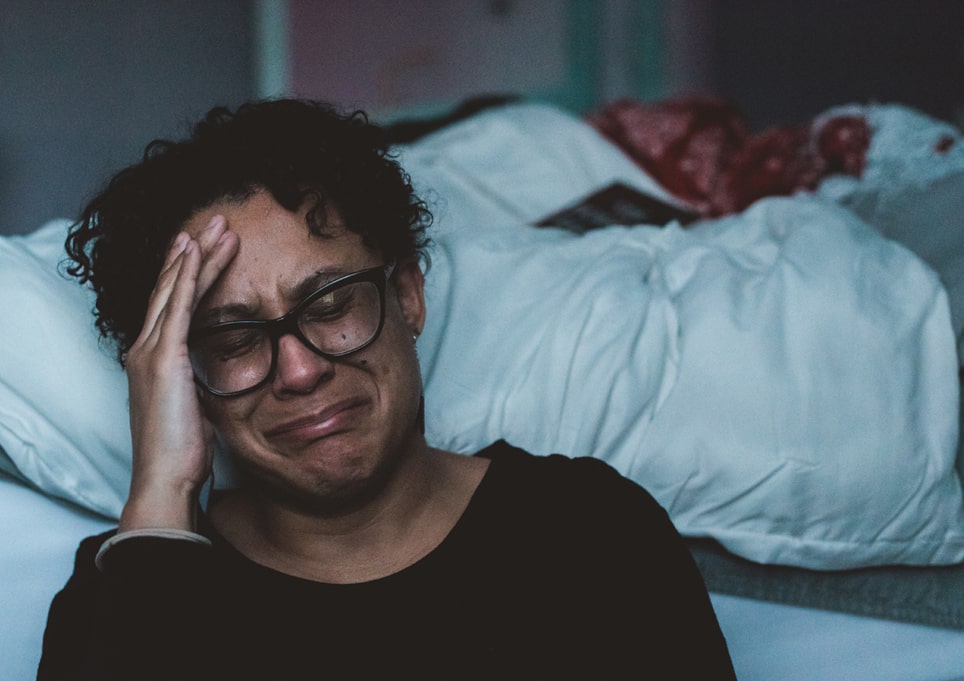Some people feel excited about the winter months approaching. Holidays, snow, cooler weather, and winter hobbies can make this time of year enjoyable, so it’s not uncommon to hear people say they prefer the winter over the summer. If you struggle with seasonal depression, though, the winter may be the most difficult time of the year.
Winter depression is a serious mental health concern, but it often goes overlooked. We tend to forget the severity of our pain after it passes, so in the warmer months, you might not remember how low you felt in the winter. Many people with seasonal affective disorder think that their symptoms are typical for the wintertime, and they might minimize their own struggles and avoid reaching out for help.
Seasonal affective disorder is just as real and just as important as major depression, anxiety, and other mental health conditions. You’re not alone if you see your depression take a turn for the worse when the days get shorter, and help is available. You should understand what seasonal affective disorder is, what causes winter depression, and what your resources are for coping with the condition.
What Is Seasonal Affective Disorder?
Seasonal affective disorder, also known as seasonal depression, is a form of depression that appears or gets worse in the winter. While other types of depression may last year-round or may not be triggered by particular environmental factors, seasonal affective disorder comes and goes with the changing of the seasons.
It’s estimated that around 4 to 6 percent of people in the United States have seasonal depression. The rates of winter depression vary dramatically from region to region, though. Areas that experience colder and darker winters have a higher prevalence of seasonal depression. If you live in an area that has bright and warm weather year-round, your risk of winter depression is far lower.
Causes of Seasonal Affective Disorder
The exact cause of seasonal affective disorder is unclear, but winter depression is most likely linked to the changes in daylight that happen in the winter. As the days get shorter and the nights get longer, your body’s circadian rhythm can become disrupted. This can lead to a change in energy and alertness, and it can result in hormonal changes that affect your mood.
Lifestyle changes during the winter months can contribute to depression, too, especially when you live somewhere that experiences four distinct seasons. In the summer, you have plenty of opportunities to get outside, go places in the daylight, and enjoy outdoor hobbies. In the winter, most people feel more cooped up. It’s hard to find the motivation to go out and see friends when it gets dark so early and the temperature is below freezing. While staying home may seem like the better option at the time, this can lead to severe isolation and monotony that can manifest in depression symptoms.
Symptoms of Seasonal Affective Disorder
The symptoms of winter depression are the same as the symptoms of other forms of depression. However, they either only occur in the winter or get much worse in the winter.
The following are the most common signs and symptoms of depression to look out for in yourself or a loved one:
- Low mood; feelings of intense sadness, guilt, or hopelessness
- Fatigue during the day; sleeping more than usual
- Loss of motivation in your favorite activities
- Changes in appetite; weight gain or loss
- Difficulty concentrating; memory issues
How to Cope With Seasonal Affective Disorder
Living with winter depression can feel incredibly isolating. For several months out of the year, it may feel impossible just to get out of bed. Treating depression can be difficult because the disorder causes a loss of motivation, so it’s hard to find the energy to try different treatments. Remember that seasonal affective disorder is treatable, though, and you can always reach out for support.
Here Are Six Tips for Coping with Seasonal Depression
1. Use light therapy.
Bright light therapy is one of the most common and effective tools for treating winter depression. The disorder is likely caused by a lack of natural light, so the light used in light therapy is designed to replicate the sun. You can purchase a light therapy box to use at home, although you should consult with your doctor before you start the treatment. Usually, you’ll sit in front of the box for about 30 minutes per day to allow the light to regulate your circadian rhythm.
2. Take vitamin D.
You can get vitamin D from sunlight and from your diet, but vitamin D deficiency is extremely common. Lack of vitamin D could play a role in your low mood, loss of energy, and other depression symptoms. There’s some debate on whether or not taking a vitamin D supplement can help with depression. Supplementing is generally safe, though, so as long as your doctor approves, you could try it to see if you notice a difference.
3. Stay social.
One of the most common effects of depression is social isolation. When you’re struggling with winter depression, reaching out to friends can be difficult. However, maintaining a social life through the winter can do wonders for your mental health. You don’t have to plan an elaborate outing or socialize every single weekend, but do your best to keep in contact with your friends so that you maintain your support system.
4. Improve your sleeping schedule.
Because seasonal affective disorder can affect your circadian rhythm, it typically causes sleeping issues. All forms of depression can affect your energy levels, too, but sticking to a consistent sleeping schedule will help you regulate your mood and energy throughout the day. Additionally, try to keep a healthy sleeping environment. Block out light, loud sounds, or other disruptive stimuli so that you can get deep and uninterrupted sleep.
5. Plan in advance.
If you experience symptoms of depression every single winter, start planning in advance for them. You can’t change the fact that the days will get shorter and the weather will get colder, but you can prepare your environment and your lifestyle for the seasonal shift. To reduce your risk of a seasonal depression episode, try to make the most of the good fall weather in September and October. Plan social outings, be active, and take steps to strengthen your mental health before the depression symptoms kick in.
6. Talk to a therapist.
Depression is such a difficult mental health disorder because it can convince you that nothing is wrong. The negative inner voice might tell you that you need to handle it on your own or that your symptoms are your own fault. Don’t let your depression stop you from getting help, though. If your mental or emotional state is preventing you from living a happy and healthy life, you deserve help and support.
Therapy for depression is highly effective for treating seasonal affective disorder and other forms of depression. By getting to the root cause of your depression and learning ways to dismiss your negative thoughts, you can overcome the disorder and live your best life year-round. Your depression isn’t your fault, but therapy can empower you to make the necessary changes to reduce your symptoms and cope with the disorder.
The Beverly Hills Therapy Group offers therapy for depression as well as many other conditions. If you’re concerned about your mental or emotional health as we head into the winter months, you can contact us to connect with a licensed therapist in Beverly Hills.




